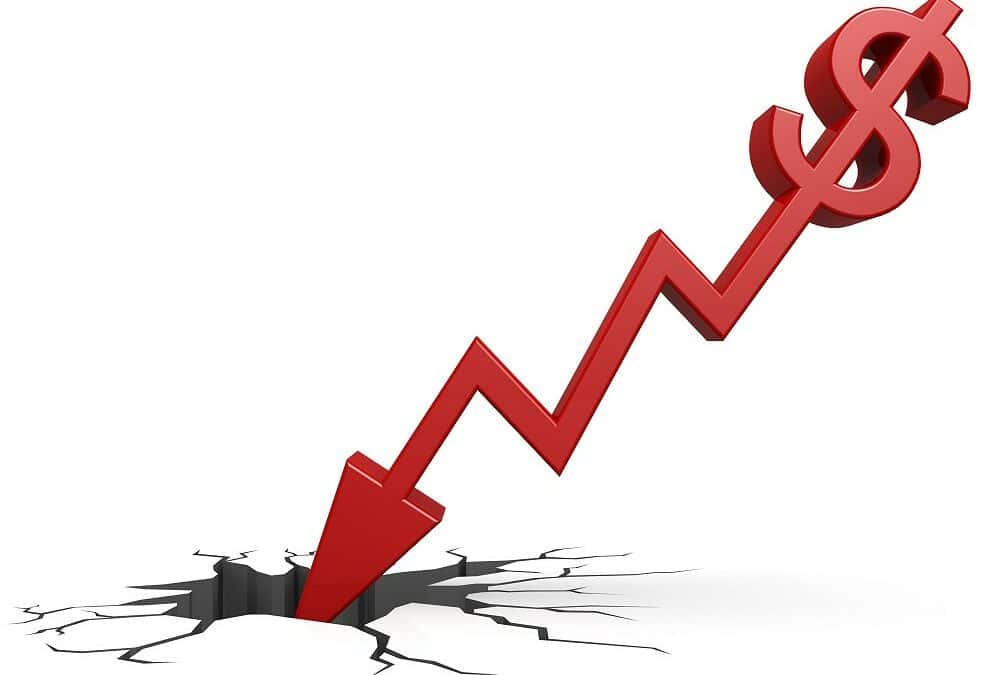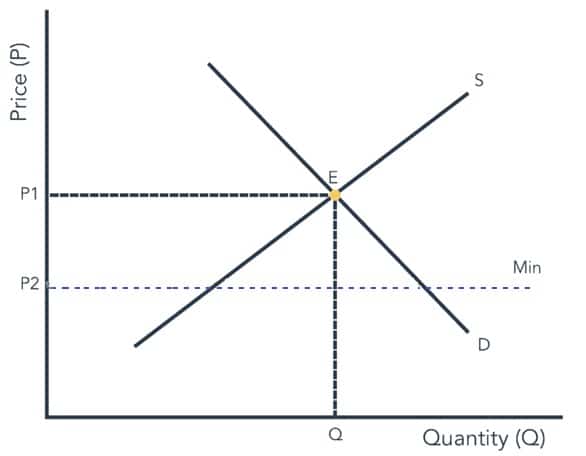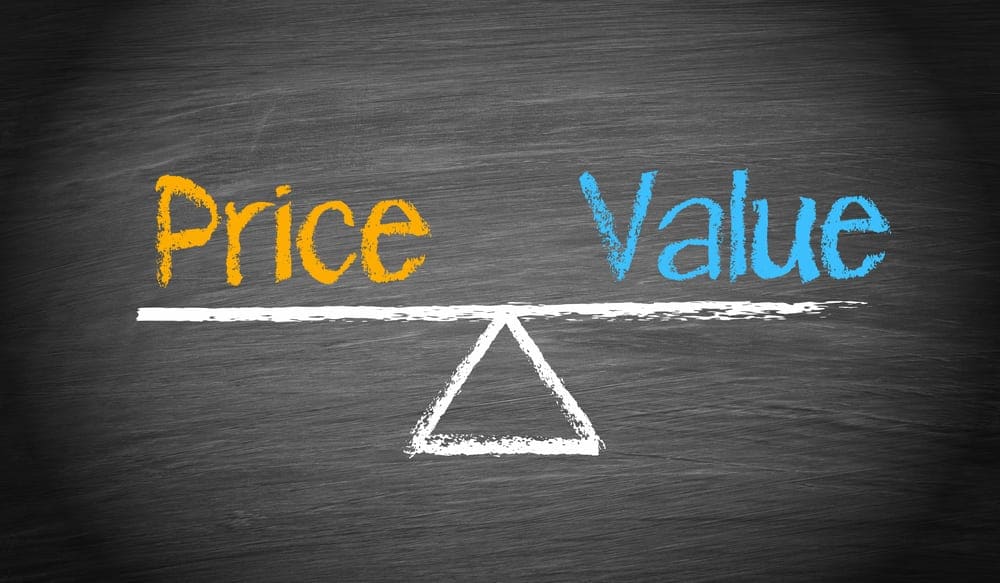
A Price Floor Example To Drive Consistent & Healthy Cashflow 💱
What is the most common price floor example? What can pricing managers do to set and manage prices so they never go below cost? And what are the best price controls to ensure a profitable product portfolio? In particular, controls that move a business away from net pricing discussions with their customers and mitigate against cashflow problems.
The best controls a pricing manager can use to manage risk derived from fluctuations in costs, supply and FX are price floors. This includes a full analysis of supply and demand dynamics and dashboard reporting to check visually when price floors delve into loss-making territory or are highly profitable.
>Download Now: Free PDF How to drive pricing strategy to maximise EBIT growth
In this article, we will continue our discussion on price floors. We will focus our discussion on a price floor example. Then evaluate the pros and cons of setting up price floors so that you can better understand the subject. By the end of this article, you’ll learn what a price floor is. Including the effects of a price floor on bottom-line profitability.
Table of Contents:
I. A Price Floor Example To Drive Consistent and Healthy Cashflow
II. Price Floors: Does Concentrating On Cost Limit Your Ability To Achieve Higher Margins?
Price Floor Example To Drive Consistent & Healthy Cashflow 💱
What is a Price Floor?
A price floor is a minimum price that is designed to protect the business from having customer price points that fall below costs. Conversely, a price ceiling is a maximum price that is designed to protect the business from overcharging customers and losing volume (above the willingness to pay threshold or reference prices). A price floor then is an essential intervention or control to manage costs and prices.
Typically, commercial managers will set a price floor based on accurate cost calculations. A pricing manager, on the other hand, will reference pre-calculated price floors in their price setting process to determine accurate customer prices i.e. ensure customer invoice prices are profitable and that the business is never in danger of falling below costs on any given SKU.
The benefit of using price floors for product pricing managers, then, is that they protect businesses from volatile swings in supply and demand, costs and FX. This is a very helpful tool in particular for distribution businesses managing large amounts of diversified inventory.
Price Floor Graph

As the diagram above shows, when setting price floors, it is very important that the commercial team accurately determines the equilibrium price (where supply and demand are equal) before they change price floors. In the case of the graph above, the minimum price (P2) is below the equilibrium price (P1). This indicates there is room for customer prices to rise to the natural market equilibrium and that the business has not reached its full pricing potential on that given product. Conversely, when a price floor is set above the equilibrium price, quantity supplied will exceed quantity demanded, and excess supply, discounting or surpluses will commonly ensue (as discussed below).
The Effects of a Price Floor
Price floors can be a very useful way of protecting the business and the end consumer from opportunistic competitors i.e., businesses that freely enter price wars to win (steal) market share. However, misuse of price floors can have a negative effect on the market and your cash flow balance. Thus, it’s important to know what happens when they are not set correctly.
Listed below are some of the effects of poorly set price floors:
-
Excessive discounting
Excessive discounting can arise when price floors are artificially inflated to hide true costs from sales as a technique to protect margin. Customer prices are set way above the market value and both manufacturers and distributors businesses quickly resort to a fairly tactical volume-based pricing strategy to off-load excess stock and inventory. Often all of this is done, without providing sales with a tactics menu on a mix or understanding the EBIT impact excessive discounting has on price perception, margins and variable costs.
-
Surplus
Setting price floors too high, especially for best-selling SKUs, can leave the business with a surplus of stock that’s difficult to shift. Excess inventory is when a business carries more stock than they need to meet its forecasted demand. Having excess inventory and stock on the floor can be difficult to shift which in turn creates a number of operational challenges such as Increasing CAPEX (storage, service and inventory risk), issues with stock (quality, product failure), and stock obsolescence.
-
Reduced Demand
When prices are above the market equilibrium, demand can drop off suddenly because customers may buy substitute goods instead (either from the business’ portfolio or from a competitor). For example, consumers may shift to buy cereals also priced at $2 per box if a loaf of bread’s price floor increases from $1.50 to $2.
-
Inflated Prices
Setting price floors above the equilibrium level can lead to higher prices. For example, selling doughnuts for $2 each and setting the price floor at $2.50. This would mean that the customer should now pay the excess of 50 cents for each doughnut. In this situation, the baker benefits from it but the customer does not.
Discussion
A price floor, then, is a very useful device when you are pricing across a thousand SKUs, multiple segments and thousands of customers; across multiple channels. Without price floors for your products, for example, you’ll almost certainly be losing substantial margins on a daily basis.
However, it’s the commercial manager’s role to establish where a price floor should be for a product (as they have the greatest insight into the cost of the business). The job of the pricing managers, conversely, would be to monitor price floors in pricing models and feedback insights to the commercial team when there are changes in the market. Largely, monitoring in this regard relates to identifying the impacts of pre-determined price floors and possibly re-setting direction with the commercial team.
Implications
- A price floor is a minimum price set on a product and, thus, it leaves room for the price to climb to its equilibrium level. Meaning, a price floor that’s below the equilibrium point will not be binding and will be irrelevant.
- A price floor to be effective, it should be set higher than the equilibrium point, so it will force prices to rise from the existing equilibrium to the target price.
- The effects of a price floor consist of lost gains from trade because of inefficient exchange, wasted production (or units produced that are not consumed) and inefficient production (or more costly units produced than necessary).
〉〉〉 Get Your FREE Pricing Audit 〉〉〉
Conclusion
Price floors prevent a price from going below a certain level. When a price floor is established higher than the equilibrium price, the quantity supplied will go beyond the quantity demanded, thus, resulting in excess supply (surplus).
Price floors also refer to “price supports,” because they support a price by not allowing it to fall below a certain level.
When are price floors most effective and how and when is it necessary? Rule of thumb: Place the price floor below the equilibrium where demand and supply meet – but ensure the business has enough buffer room between actual costs and price floors. Meaning:
A good price floor example is set below market value but above costs. The tricky part in all of this then is calculating the optimal price floors in businesses where costs and demand are dynamic.

Price Floors: Does Concentrating On Cost Limit Your Ability To Achieve Higher Margins? 🍄
The parameters within which you set individual price points for your products and services (i.e., your price floors and ceiling) can be the difference between setting optimal prices to maximise revenue or barely breaking even each month.
The strange thing is that many managers don’t even know that an item’s price floor is the foundation of a profitable price point. Instead, they go head first into price-setting without validating clear price boundaries. As a result, lose hard-earned margin in the process.
In this article, I’m going to show you how to determine an item’s price floor. So that you avoid setting unprofitable prices.
What are price floors?
A price floor is the starting point for setting a price. Under many circumstances, businesses should set their prices within pre-ordained parameters – known as price floors and price ceilings.
A price floor is the lower end of your price range parameter. Typically, managers should think of setting the price floor and consider their costs. But not so much so that they forget to allocate fixed and variable costs. It is important to have this set if you have to haggle price negotiations.
Allocating fixed costs into per-unit values is a challenging task. And pretty much an analysis that is not worthwhile or even recommended for price setting.
Many managers, however, make the mistake of fully allocating costs before price setting. They feel they must translate the arbitrariness of overhead expenses into per-unit values. This kind of makes sense, given that you usually express price as a per-unit quantity. However, we suggest that you leave cost accounting to the experts (i.e., accountants). Moreover, don’t waste your time here (read the case study below to find out why).
Case Study on Price Floor Example
Consider the following real-world case study of a building materials business based in Sydney. This business tried to enter the market for an extensive range of bracing products in the commercial properties segment. They developed a range of high-quality lining products and calculated a very modest markup over fully allocated costs.
By a detailed analysis of their costs (fixed and variable), they determined each item’s price floor. This came about because an accountant in the finance department decided to allocate all costs among the individual items sold. In his view, it was important to resolve all arbitrariness. He then felt it was acceptable to set price points for all their lining products by applying a simple percentage markup to each item. This was somewhere in between the price floor and price ceiling.
When the building materials distributor/manufacturer investigated why their lining range was not selling well, they discovered that their main competitor, who was also producing very similar, high-quality lining products, was underselling them by a considerable amount.
The business was flummoxed: ‘Why was this happening? Had they painstakingly allocated a portion of fixed costs to individual products? Had they applied a markup as they had always done?

A few months later they decided to hire a pricing manager to review their pricing. The new pricing manager solved the mystery on the first day on the job.
She was taken through the business price-setting procedure after an introduction to the business’ pricing system. Instantly, she could see that the accountant was spending too much of his time translating fixed costs into per-unit values.
She asked the accountant why he decided to determine the price floors for lining products like this. The accountant replied: ‘This is what we do here. How else can you minimise the arbitrary allocation of overhead costs?”
The pricing manager then asked: ‘What’s your rationale for allocating a more significant amount of the office staff costs to trimming than lining products?”
The accountant couldn’t remember exactly: “Erm, it seemed right at the time… I’ll have to review the numbers again.”
“Look at your competitor’s price points for instance,” the pricing manager continues to explain, “their prices are considerably lower than ours, yet they are selling pretty much the same lining products as us. You and I both know this competitor very well. Their fixed cost structure is pretty much the same as ours. What do you think they are doing differently to us to produce lower prices?
The accountant began to understand that they were overselling their lining products just because of an accounting convention.
‘It appears to me,” said the pricing manager, ‘that our competitors have likely applied a markup percentage to their variable costs whereas we are applying a mark up to the total of each item’s variable costs, as well as its share of the company’s fixed costs.”
Price Floor Example
Experienced and skilled pricing managers simplify their cost analysis to derive more valuable price points and pricing strategies. They focus on variable costs to set price floors for their products and services. Such as a cost that varies directly with the number of product units sold.
The problem with determining price floors based on an item’s share of the company’s fixed costs is that you are likely pricing yourself out of the market, i.e., your price floor for an article is more likely to be higher than a competitor who puts fixed costs aside.
Implications
- Think about setting an item’s price floor using your variable costs. Your final sale price will likely be higher than your variable value and in turn, result in profitability. Have a trial run at putting fixed costs (i.e., costs which do not change with the number of units sold) aside when determining a product’s floor price. Has it increased your price flexibility?
- Think about how you are going to translate your customer’s needs into a single price. Determine accurate price ceilings for your products and services. Don’t stop until you find out the maximum amount your customer would pay, when fully informed.
- An accountant may not be the best person to set prices. Yes, they understand costs. However, you don’t need to translate fixed costs into per-unit values. Translate your customers’ needs into per-unit values. The main role of a pricing manager.
〉〉〉 Get Your FREE Pricing Audit 〉〉〉
Conclusion
Using variable costs to set a product’s floor price is a more natural way to consider a product’s per-unit costs. This ultimately enables you to establish more effective price points.
If you would like to know whether you are under or overpricing your products and services – check out this guide.
Determining a suitable price floor will enable you to set more profitable prices. However, a strategic price-setting strategy should always focus more on customer value rather than costs. Don’t find out too late in the game that your final selling prices are not covering your expenses. Worse still, driving customers to your competitors.
For a comprehensive view on maximising growth in your company,
Download a complimentary whitepaper on How To Drive Pricing Strategy To Maximise EBIT Growth.
Are you a business in need of help to align your pricing strategy, people and operations to deliver an immediate impact on profit?
If so, please call (+61) 2 9000 1115.
You can also email us at team@taylorwells.com.au if you have any further questions.
Make your pricing world-class!
Related Posts
Leave a Reply Cancel reply
Categories
- marketing strategy (26)
- Organisational Design (14)
- Podcast (114)
- Pricing Capability (87)
- Pricing Career Advice (10)
- Pricing Recruitment (19)
- Pricing Strategy (291)
- Pricing Team Skills (13)
- Pricing Teams & Culture (25)
- Pricing Transformation (47)
- Revenue Model (25)
- Sales Effectiveness (27)
- Talent Management (7)
- Technical Pricing Skills (35)








